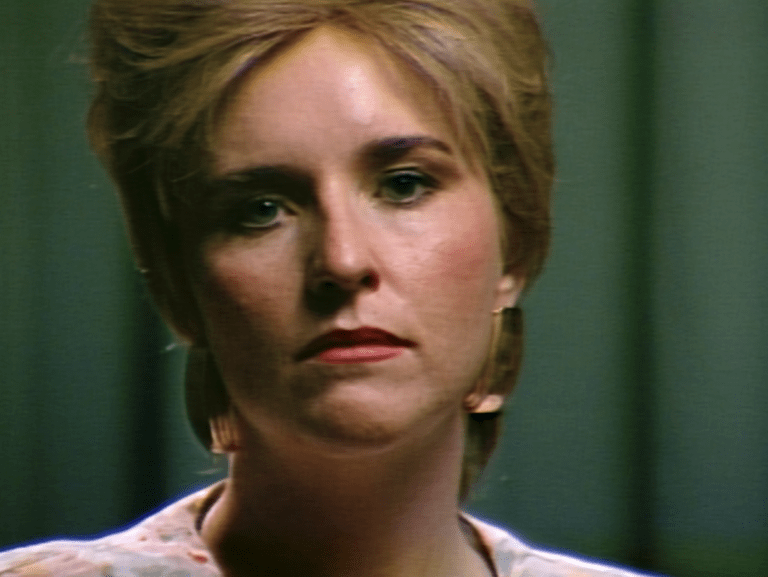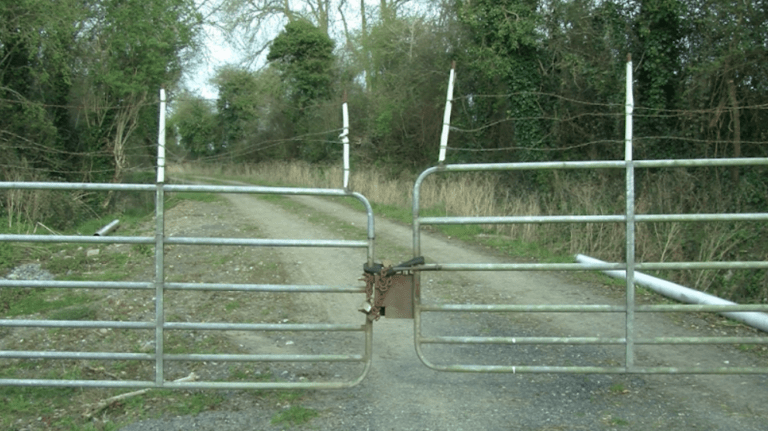This eclectic programme of work shifts from an act of deliberate and playful obfuscation (3 Peonies) to a process of attempted rediscovery (In Search of the Forenaughts Longstone) to an uncovering of media artefacts that speak to both deliberate and discrete forms of creative expression in the face of state sponsored censorship (Nazarbazi and Few Can See). Together these works describe a variety of creative means of expression borne out of a necessity to speak however indirectly.
FILM INFORMATION:
Stephanie Barber, 3 Peonies, 2017 , U.S. ,3 mins.
Jonathan O’Grady, In Search of the Forenaughts Longstone, 2021, Ireland, 12 mins.
Maryam Tafakory, Nazarbazi, 2022 Iran/UK, 19 mins.
Frank Sweeney, Few Can See, 2023, Ireland, 42 mins.
Running time: 76 mins
3 PEONIES
Stephanie Barber | United States | 2017 | 3 mins | Fiction
A brief, poetic 16mm film on a simple sculptural action. An experimental film in which the simplicity of the image is offset by the sonic implications. What becomes apparent is the humour possible in material interactions and the tender and sometimes melodramatic symbolism of cut flowers. What begins as a reverence for natural beauty ends up pointing towards the abstract expressionism and color field work of high modernism which, in many cases eschewed the banality of such ‘natural’ beauty. The collaged soundtrack suggests weightier concerns, gently insistent behind the flatness of the utilitarian sounds of ripping tape.
IN SEARCH OF THE FORENAUGHTS LONGSTONE
Jonathan O’Grady | Ireland | 2021 | 12 mins | Fiction
O’Grady’s film records a pilgrimage of sorts, conducted in search of a hard-to-find menhir or standing stone within the area of Naas, County Kildare. One of three in the area, the Forenaughts Longstone is located within the grounds of a large private estate, inaccessible for visitation, or indeed, view from the nearby road. The works traces the artist’s attempt to try and reach the stone on his own accord, navigating the narrow lanes and looking for openings that might allow access to the monument. In the end the journey is a failure, leading to dead-ends and obstructed views of the land. The subsequent work becomes a way of speculating about movement through the landscape; its restrictions and potential new access points. Through the use of footage, graphic and colour interludes and text, the work mediates on the privatisation of land and heritage, inaccessibility as invisibility and trespassing as a necessary tactic for cultural reclamation.
NAZARBAZI (یزابرظن)
Maryam Tafakory | Iran, United Kingdom | 2022 | 19 mins
Nazarbazi [the play of glances] is a film about love and desire in Iranian cinema, where depictions of intimacy and touch between women and men are prohibited.
The film focuses primarily on images of women whose bodies have been erased and victimised in post-revolutionary cinema, alluding to discreet forms of communication that operate within yet circumnavigate the censors. It attempts to touch the spaces we cannot touch, inner feelings/sensations, and untouchability beyond bodily experience, that of unspoken and unwritten prohibitions. The film uses poetry and silence as the only languages with which we can touch these spaces of socio-political ambiguities.
FEW CAN SEE
Frank Sweeney | Ireland | 2023 | 42 mins | Fiction
Few Can See examines the legacy of broadcast censorship of the conflict in the north of Ireland and political movements during this era. The project attempts to recreate material absent from state archives due to censorship, based on contemporary oral history interviews.
Winner of the Tiger Short Award 2024 at International Film Festival Rotterdam and received a Special Mention from the jury at the FILMADRID Awards.
If you are interested in finding out more about featuring this screening as part of your festival or venue programme contact us any time at [email protected]

Frank Sweeney | Few Can See | Ireland | 2023 | 42 mins | Fiction

Maryam Tafakory | Nazarbazi نظربازی |
Iran, United Kingdom | 2022 | 19 mins

Stephanie Barber | 3 Peonies | United States | 2017 | 3 mins | Fiction

Jonathan O’Grady | In Search of the Forenaughts Longstone | Ireland | 2021 | 12 mins